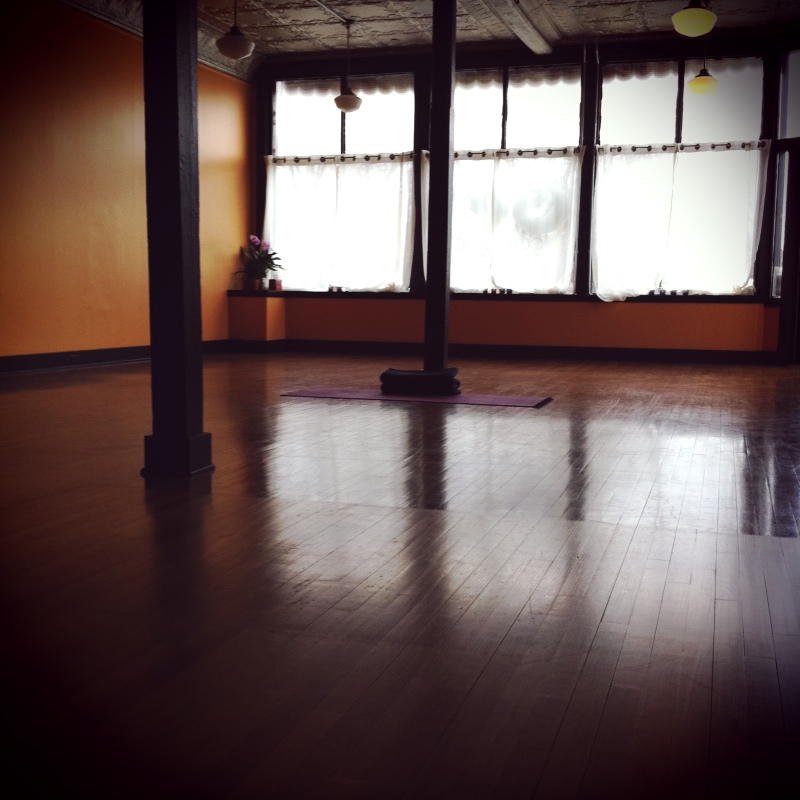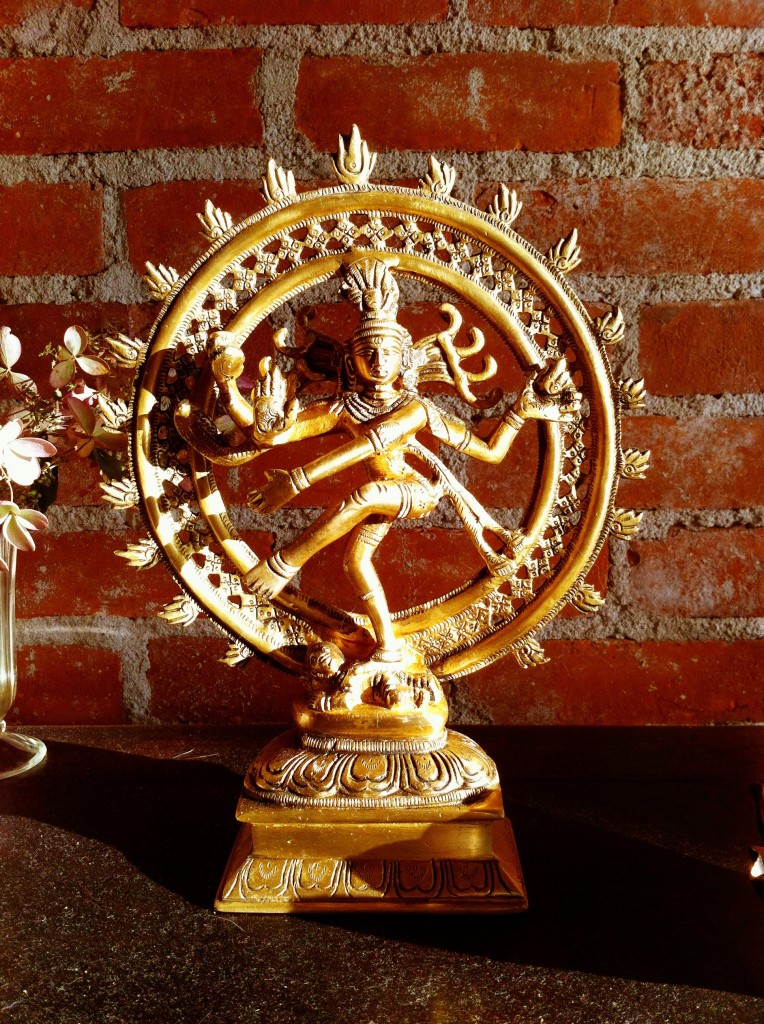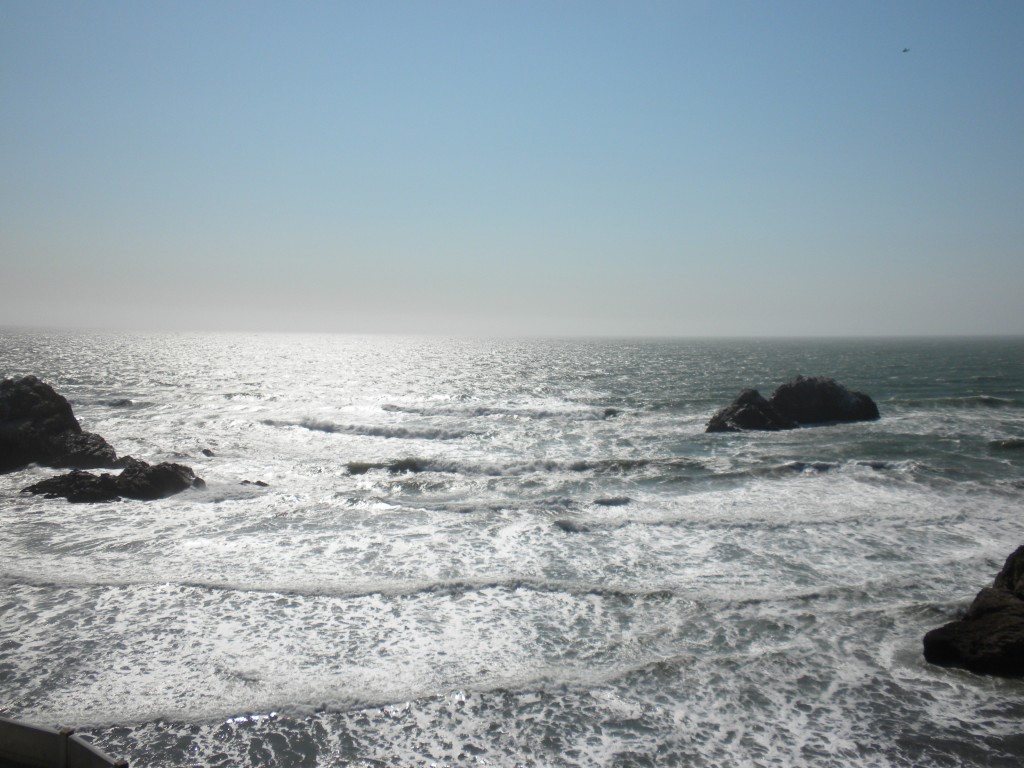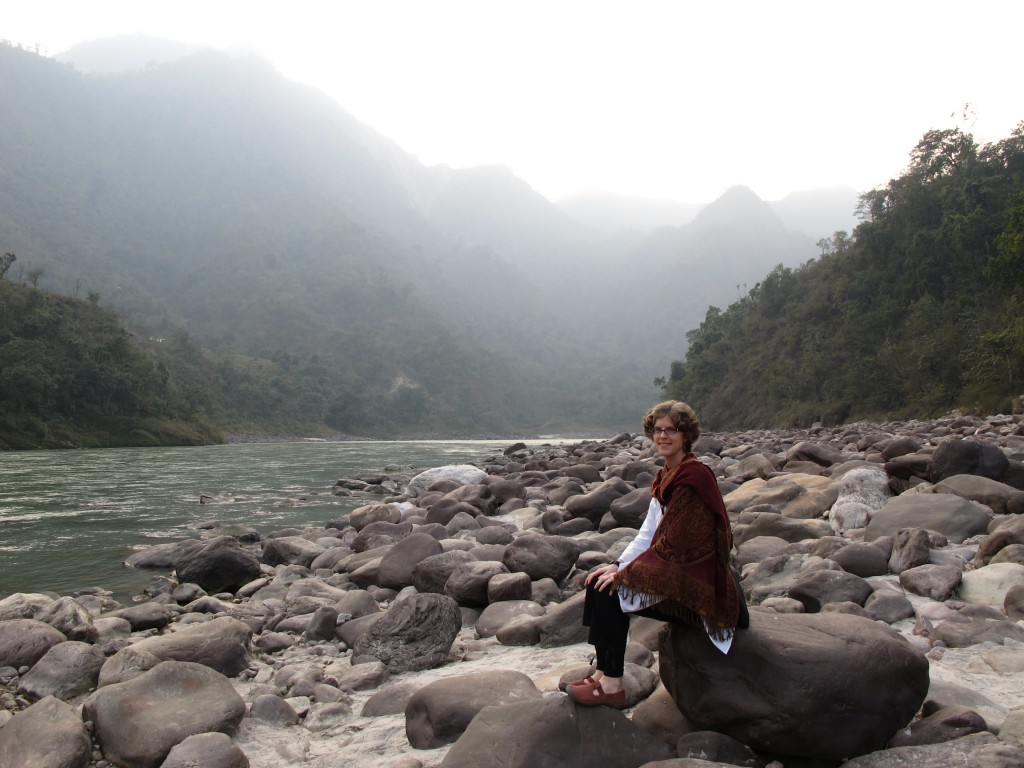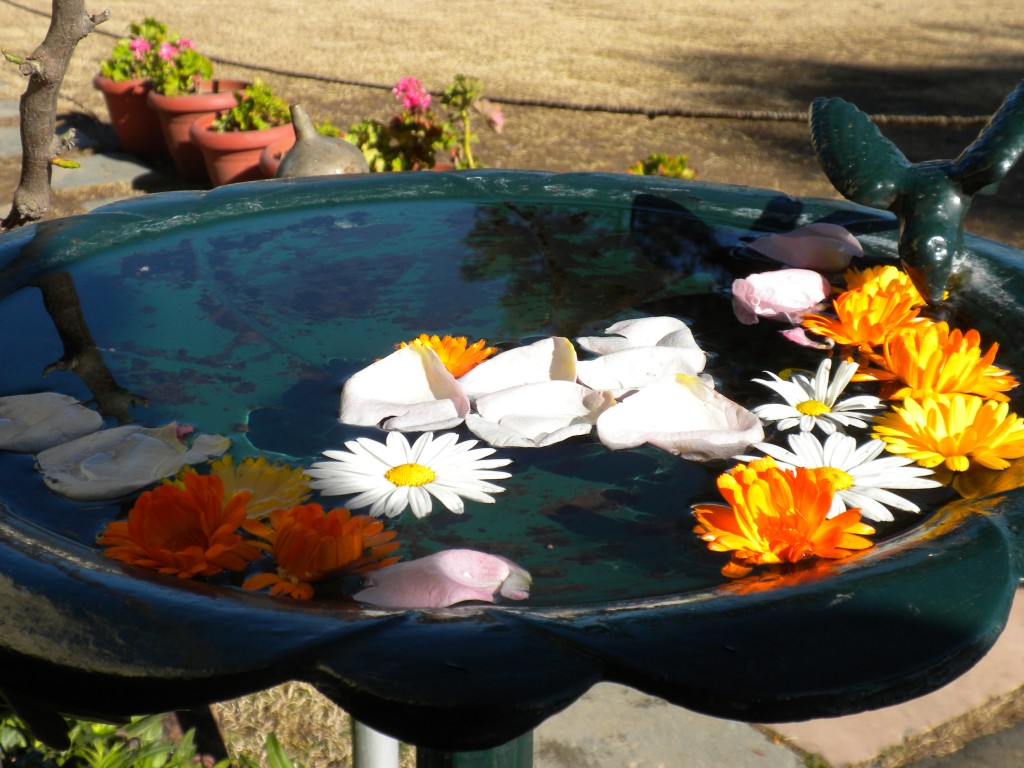You are searching for enlightenment in the external world, but that is not the way. Are you prepared for the journey from the grossest to the subtlest aspect of your being? Are you competent enough to discipline yourself on all levels? Can you practice? Are you prepared to know life within and without? If you are, come along. ~Swami Rama, Samadhi: The Highest State of Wisdom
Author Archives: Jennifer
Pranayama Workshop with Pandit Dabral
November 6th, 2014 | Posted by in practice | pranayama | yoga - (0 Comments)This Saturday evening, one of my extremely gifted and experienced teachers, Pandit Hari Shankar Dabral from Calgary, will be in Minneapolis at The Meditation Center to lead a workshop on yoga pranayama. Come and learn the subtler aspects of kapalabhati, bhastrika, ujjai, and brahmari from a teacher in an authentic lineage. It will be a wonderful experience! Find out more at The Meditation Center.
The Science of Mantra
November 2nd, 2014 | Posted by in mantra | meditation | practice - (0 Comments)New Location for the Sunday Practice
April 29th, 2014 | Posted by in hatha | meditation | practice | studio | yoga - (Comments Off on New Location for the Sunday Practice)The always-lovely OM collective is moving locations, and so will we!
Starting May 4, the Sunday morning integrated practice will take place a few blocks north at the new studio at 515 West Lake Street, on the southeast corner of Lake and Garfield. There’s a parking lot (yay!) and lots of street parking (yay!). Please join us May 4—and every Sunday.
March Class Update
March 5th, 2014 | Posted by in hatha | meditation | practice | yoga - (Comments Off on March Class Update)Drops in the Ocean of Bliss
January 10th, 2014 | Posted by in hatha | meditation | practice | yoga | yoga nidra - (Comments Off on Drops in the Ocean of Bliss)The great Shankaracharya says that everyone is ananda. Being of bliss … ananda, purnam, completeness, bliss, totality of bliss. … All the pleasures of the world are little sparks of the fire of ananda. All the pleasures of the world are just drops in the ocean of ananda, and every drop is trying to experience what it feels like to be the whole ocean. Every drop that is you and I, every drop is trying to feel, trying to see what it would be like to be the whole ocean of that joy and bliss. ~Swami Veda Bharati, “Yoga Nidra Refined Silence“
 Join me for two new class series:
Join me for two new class series:
Hatha: Combined I and II starting January 4
Meditation III: Mantra, the Key to Deeper Meditation starting January 8
Check out my classes page for details.
Coming Home to Meditation
January 1st, 2014 | Posted by in meditation | practice | yoga - (Comments Off on Coming Home to Meditation)We travel. We oversleep. We never get to sleep. We get caught up in emergencies. We get caught up in other pleasures. We get tangled in others’ schedules, lives, and choices. We make choices, and sometimes these include the choice not to meditate.
And then we return. We sit; we draw our attention inward; we relax our bodies; we find our breath; we come home.
For many of us, this is the season of returning. We visit home after a year of absence or see friends we haven’t seen in a while. We return to physical spaces and to relationships from which we’ve had time off. Often, especially when we visit family, we lapse back into old patterns, but despite this, we always return home different. We have changed.
Yoga science/philosophy handles this concept of change in a really interesting way. One of the sources of our unhappiness is being caught up in the cycle of causation; we see things arise and perish, come and go, and we believe that this is the basic structure of reality. But yoga philosophy says that this assumption is based on an illusion; not all is impermanent. What’s most interesting is that it is through meditation that we come into contact with this thing that is permanent.
Swami Rama of the Himalayas says this:
There is a source that you cannot see with the mind. At some moment you will learn to leave behind body consciousness, breath consciousness, sense consciousness, mind consciousness—and finally go beyond all of them. At such a moment, you no longer identify yourself with the objects of your mind or the objects of the world. That moment reveals a state of equilibrium, of tranquility. In that state you become the inner witness, not through some internal self-effort, but because that is who you are. (“4 Ways to Improve Your Meditation,” Yoga International)
Meditation is this act of “coming back” to the space of the witness. It is like taking a journey, with that still center the destination. Along the way and as we practice, we have to encounter thoughts and feelings from our unconscious. Swami Rama goes on to say, “Your thoughts are not mere thoughts; they are people—identities within you. You are a world in yourself. You are a universe, and all your thoughts are people.” People. Like your mom. Like the kid who knocked you into the lockers in high school. Like the person you were yesterday.
Just like family members, these thoughts can be huge distractions; they arise and we get lost in memory or imagination. But our past practice helps us. In meditation, we know to allow these thoughts to arise and pass; in meditation, we take the position of the witness; we consciously choose to take note of passing thoughts without engagement or judgement or we turn away, depending on how useful they are to our lives off of our meditation seat. Then, as we go about our days and go on vacation and meet distractions, we remember, and we allow or don’t allow our choices to be influenced by past patterns and choices.
As meditators, we also know—or have experienced the hint of—moving beyond the flow of thoughts and moving into an experience of stillness, of silence. It can be at once an experience of great comfort and great exhilaration. And this can be the great motivator to return to the practice, if we allow it.
For once you have tasted flight, you will walk with your eyes turned skywards, for there you have been and there you will long to return. ~ Leonardo da Vinci
Marshmallows, Pie Charts, and the Meaning of Yoga
October 15th, 2013 | Posted by in meditation | practice | yoga | Yoga Sutras - (Comments Off on Marshmallows, Pie Charts, and the Meaning of Yoga)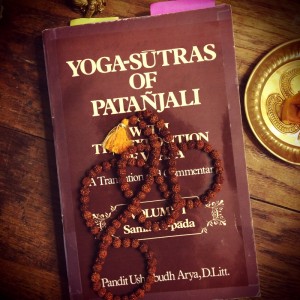 On Saturday, October 5, those of us gathered in the Meditation Center’s puja room were gifted with the thoughtful, kind, and inspiring presence of Pandit Tejomaya. Travelling to us from his Island of Peace Yoga center on Gabriola Island—in the Salish Sea off the coast of British Columbia, Canada—Pandit-ji came to share his reflections on some core teaching of the Yoga Sutras and on his experience developing what for him has been an intense, years-long practice of the yamas and niyamas.
On Saturday, October 5, those of us gathered in the Meditation Center’s puja room were gifted with the thoughtful, kind, and inspiring presence of Pandit Tejomaya. Travelling to us from his Island of Peace Yoga center on Gabriola Island—in the Salish Sea off the coast of British Columbia, Canada—Pandit-ji came to share his reflections on some core teaching of the Yoga Sutras and on his experience developing what for him has been an intense, years-long practice of the yamas and niyamas.
It’s probably safe to say that none of us thought the workshop would involve marshmallows or pie charts. But Pandit-ji’s graceful discussion of the meaning of yoga and its relationship to things like vrttis, the kleshas, karma, the accumulation of samskaras (rather like piles of minimarshmallows, don’t you think?), and the percentage of the Yoga Sutras devoted to each of Pantanjali’s eight limbs (enter the pie charts) showed us how. All this was to point out that, if we wish to achieve yoga, we’ve got a lot of practice to do, and coming up with practical ways of pursuing the yamas and niyamas is likely part of that.
Pandit Tejomaya’s own practice of the yamas and niyamas, he told us, is grounded in key insights from Swami Veda Bharati and Swami Rama of the Himalayas, including the ideas that progress in yoga involves studying oneself at the level of action, speech, and mind/thought; that this progress takes self-discipline; and that true knowledge comes from direct experience. And the practice itself? Pandit-ji takes one of the yamas or niyamas and makes a commitment to practice it in a particular, concrete way at one level (say, the level of speech) for twenty-one consecutive days. Then he moves on to practice that yama or niyama at another of the three levels (say, the level of action) for twenty-one consecutive days, finally advancing to the third level (mind/thought, for example) for (you guessed it) twenty-one consecutive days. Any mess-up puts him back to day one of whatever level he’s on. Success with one yama or niyama means choosing another, and starting the process from the beginning.
Intimidating? Maybe for some, but totally inspiring for others of us, and his gentle encouragement (and funny examples of his mess-ups) urged us to consider how we might craft similar practices for ourselves. Most of all, his very presence—graceful, serene, sincere—provided the inspiration, showing us, as it did, the end result of the devotion of a true yogi.
The purest consciousness in the highest level of meditation is a still consciousness. It is like a reservoir, like a forcefield, dynamic, vibrant but a very quiet vibration. . . . The pure consciousness in meditation is aware of itself. . . . It is like a flame, which, to prove to itself ‘I am a being of light,’ looks at all the illumination around it, which it itself is casting. ~ Swami Veda Bharati





